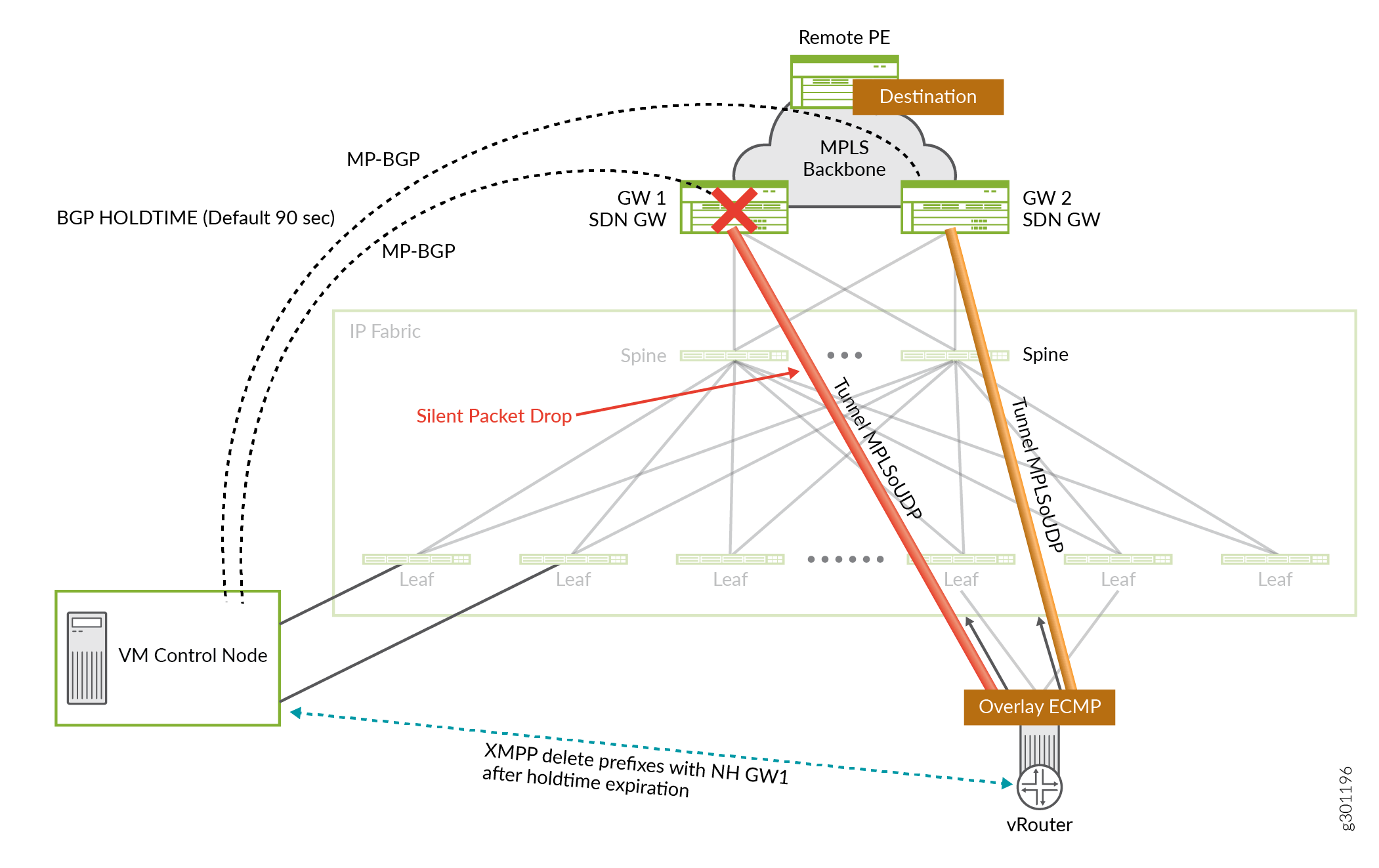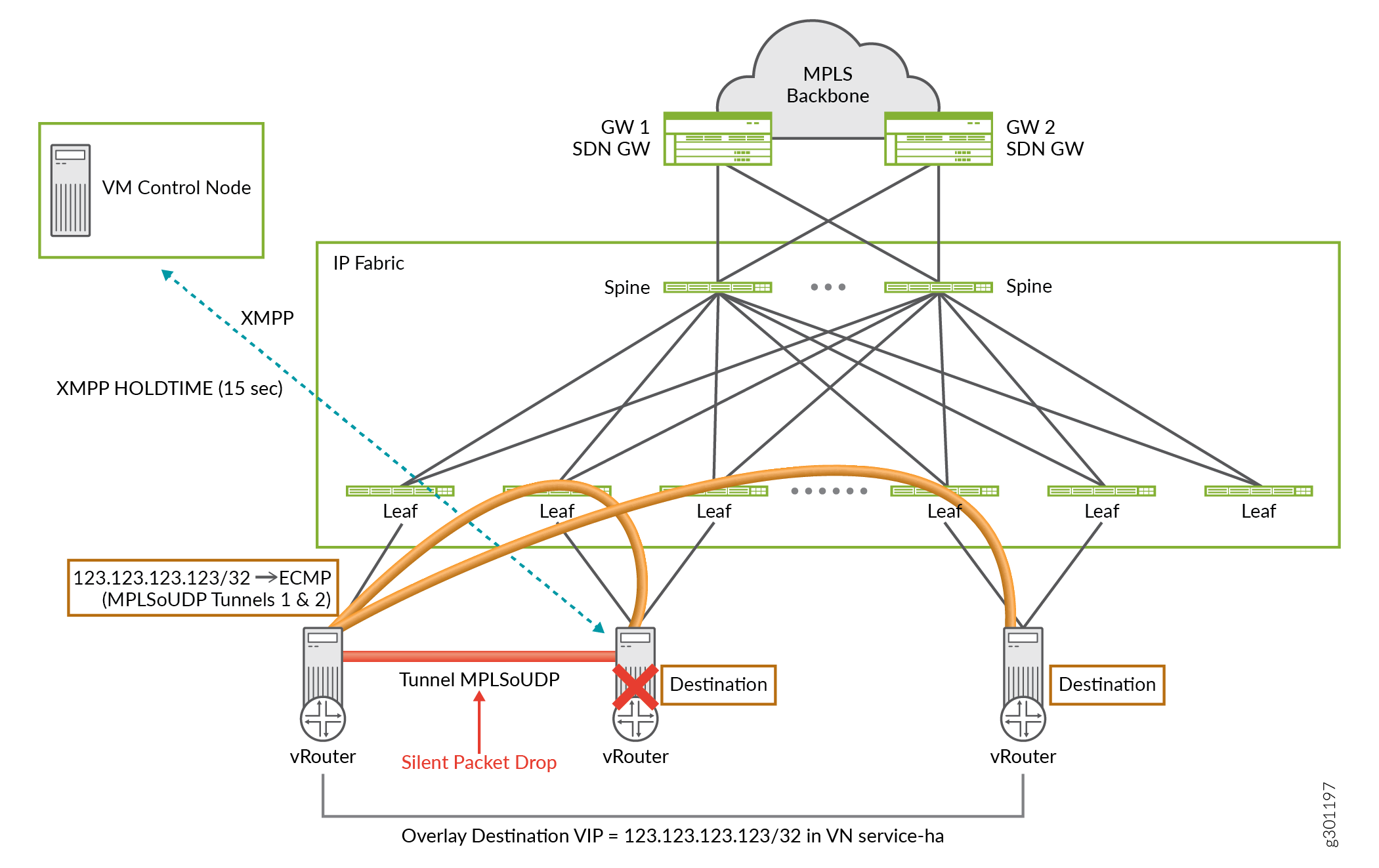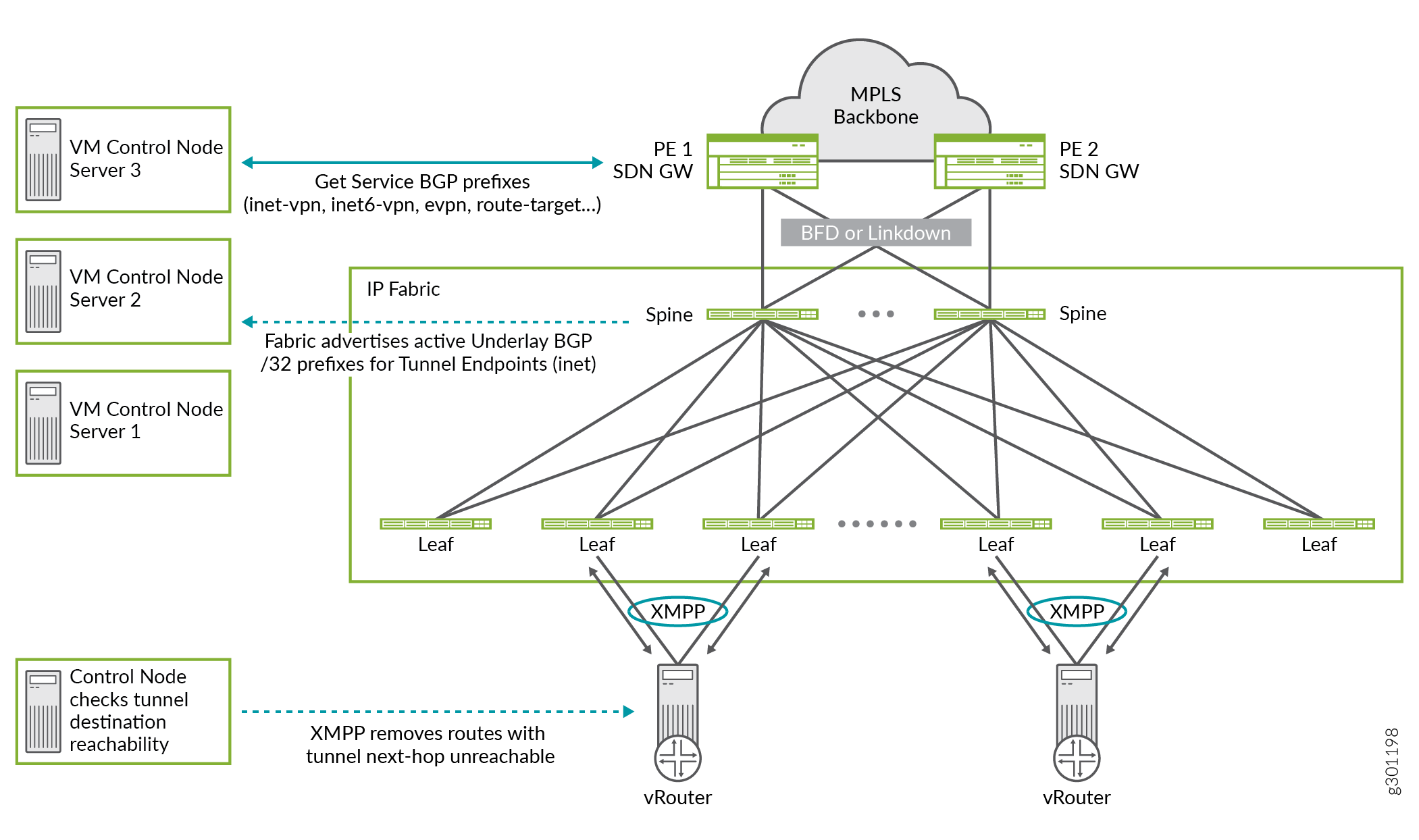Fast Routing Convergence with OpenSDN¶
- date:
2020-08-25
What is Convergence¶
Convergence or routing convergence is a state in which a set of routers in a network share the same topological information. The routers in the network collect the topology information from one another through the routing protocol. The state of convergence is achieved when all routers send routing information to all routers in the network. In other words, in a converged network, all routers are aware of the network topology and the optimal route to send a packet. Any change — for example, the failure of a device — in the network affects convergence until information about the change is propagated to all routers and convergence is achieved again. The time taken by the routers in the network to reach convergence after a change in topology is termed convergence time.
Network convergence and fast failover in case of failures in the network are critical for high performance service provider networks that run sensitive applications. The speed of achieving convergence in a network depends on the following actions:
Detection—A device detects a failure in the route. Corrective action, that is, identifying a new forwarding path, can be taken only after identifying the device that failed. Unlike a physical network where device availability or failure is identified through events, in virtual network, device reachability is established through keepalive messages. To achieve fast network convergence, the detection time — the time taken to detect failure — is of high importance and must be kept within acceptable limits.
Local Repair—As soon as a device failure is detected in the primary route, traffic is diverted to backup route. At this point, the failure or the change in topology is not propagated to all the devices in the network.
Global Repair—Global repair or network convergence is said to have achieved when the change in topology is propagated to all devices in the network though routing protocols.
The availability of services depends on the time taken for failure detection and correction.
Fast Network Convergence in a Network Managed by OpenSDN¶
OpenSDN provides software defined networking solution that offers network virtualization at the compute node-level through overlay networking. In a software-defined network, failures might occur in the overlay or in the underlay. A failure in the overlay can be the failure of a virtual machine or a pod. The vRouter can detect, rectify, and propagate any such failure in the overlay to the gateways by using the health check mechanism. Of the several possible types of failure in the underlay, the most critical ones are the SDN gateway failure and compute node failure.
Fast convergence feature improves the convergence time in case of failures in a cluster managed by OpenSDN. In a typical OpenSDN-managed network, the customer end points connect to the vRouter through MPLSoUDP, GRE, or VXLAN overlay tunnels from the gateway device. The vRouters connect to the MPLS gateway through the fabric endpoints.
The fabric underlay routing has evolved to the extent that most fabric underlay failures such as those in the leaf or spine, in the links connecting the leaf and spine or the gateway and spine, vRouter and leaf, and so on can be efficiently addressed within a very short time without impacting the flow of traffic. However, there are two types of failures that can lead to silent packet drop. They are failures in the vRouter and failures in the gateway device, both of which are referred to as tunnel end point failures.
The overlay tunnels are maintained by the control node, which exchanges routes between the tunnel end points. The control node uses BGP to exchange routes with the gateway devices and XMPP to exchange routes with the vRouter. As there are no keepalive messages running on the overlay tunnels, the control node depends on the BGP hold time expiration to diagnose failures in the northbound connectivity to the gateway, and on the XMPP timeout for failures for southbound connectivity to the vRouter. Any failure in gateway can lead to a silent packet drop for up to 90 seconds, which is the default value for BGP hold time and expiration. This is because the control node can detect the gateway failure only after the BGP hold time expires. Similarly, a failure in the vRouter can lead to a silent packet drop for up to 15 seconds, which is the default value for XMPP timeout.
Figure 1 shows what happens when the gateway router fails. BGP hold time expires after 90 seconds as the destination is unreachable and the same is propagated to the control node, which recognizes that the gateway router has failed. This leads to a silent packet drop for 90 seconds until the routing table in the control node is updated and convergence achieved.

Figure 2 shows a scenario where the vRouter fails. The control node comes to know about the vRouter failure only after 15 seconds when the XMPP hold time expires. Traffic is dropped during these 15 seconds until convergence is achieved.
Figure 2: Tunnel Endpoint Failure: vRouter

Starting with Release 2008, OpenSDN supports fast convergence. The fast convergence feature reduces the convergence time in case of an overlay end point failure. The OpenSDN control plane responds to the changes in the underlay network and then takes action to achieve convergence quickly, reducing convergence time that would have taken in a typical scenario where control plane depends on BGP hold time expiration. Typically, the spines come to know of any tunnel end point failures through the BFD or the link down protocols. With the fast convergence feature, the spine propagates this information to the OpenSDN Controller and removes the tunnel end point from the control node through a routing table update. The control node recognizes this as a tunnel end point failure and initiates routing convergence. To respond to northbound failures (gateway failure), the control node performs a next-hop reachability check, and as soon as a failure is detected, the control plane initiates convergence. To achieve fast convergence in case of a southbound failure (vRouter failure), you can set the XMPP hold time to a value as low as one (1) second. Whenever the XMPP hold time expires, the control node recognizes it as a failure in the vRouter and initiates convergence. Though you can set a low value of one, the recommended timeout value is nine (9) seconds. A lower value is recommended only for smaller clusters.
Figure 3 shows how OpenSDN achieves fast convergence by using the destination reachability information that the spine gathers through BFD or link down protocols, and by using the XMPP timeout information sent to the control node to detect a failure in the vRouter.
Figure 3: Fast Convergence in a Contrail-managed Network

Release |
Description |
|---|---|
2011 |
Starting with Release 2011, OpenSDN supports fast convergence. |
2011 |
To achieve fast convergence in case of a southbound failure (vRouter failure), you can set the XMPP hold time to a value as low as one (1) second. Whenever the XMPP hold time expires, the control node recognizes it as a failure in the vRouter and initiates convergence. |